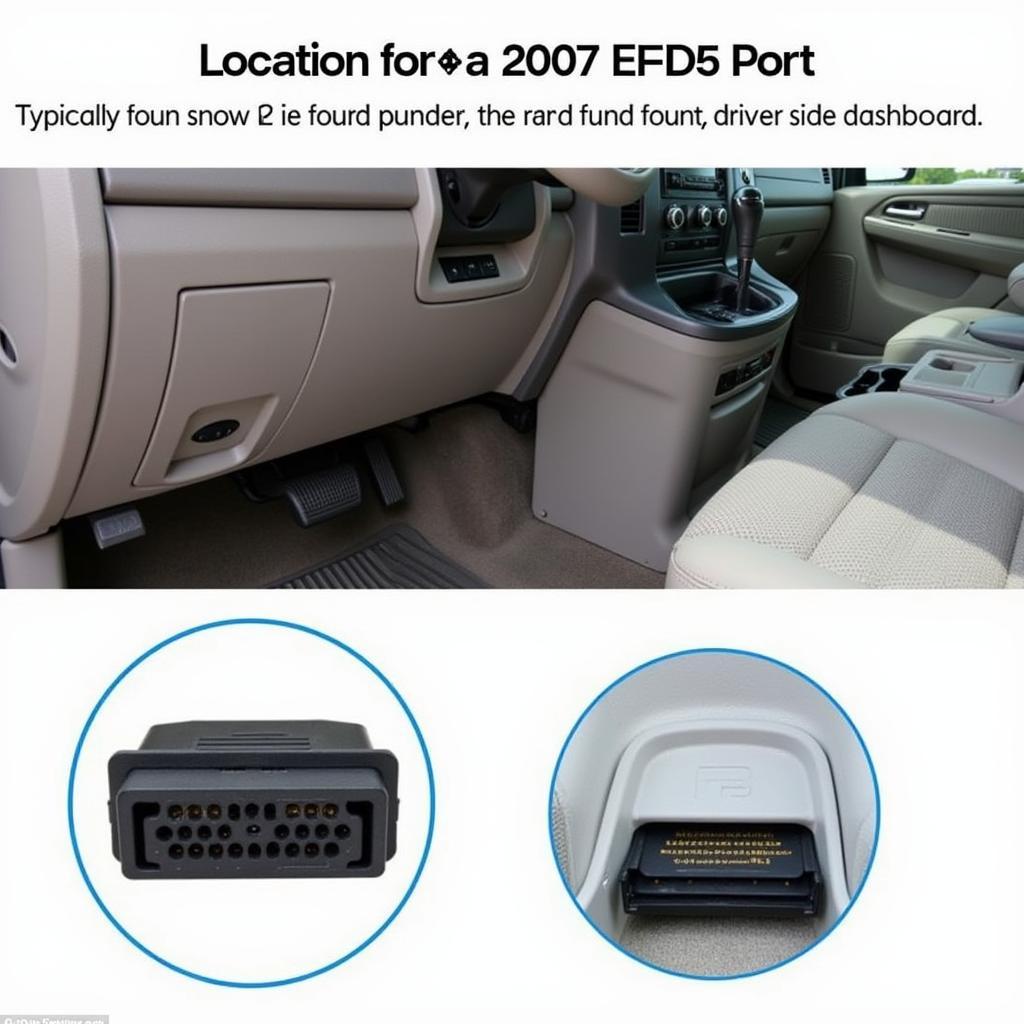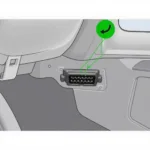The Ford E250 has been a reliable workhorse for businesses and families for decades. As with any vehicle, understanding its diagnostic system is key to keeping it running smoothly. For the 2007 model year, the Ford E250 utilizes the OBD2 system, a standardized interface that allows you to communicate with your van’s computer and decipher those sometimes cryptic warning lights.
What Does the OBD2 System Do?
Your 2007 Ford E250’s OBD2 system is constantly monitoring various systems, from engine performance and emissions to transmission function and airbag status. When an issue arises, the system triggers a warning light on your dashboard – often the dreaded “Check Engine” light – and stores a corresponding trouble code within the vehicle’s computer.
Accessing the Codes: OBD2 Scanners
This is where OBD2 scanners come into play. These handy devices plug into the OBD2 port, usually located under the driver’s side dashboard, and allow you to read and clear trouble codes.
There are several types of OBD2 scanners available, from basic code readers to advanced professional-grade tools.
- Basic Code Readers: These are the most affordable option and can read and clear basic trouble codes.
- Bluetooth Scanners: These connect wirelessly to your smartphone or tablet, providing more detailed information and often offering additional features like live data streaming.
- Professional-Grade Scanners: These are the most expensive but offer the most comprehensive diagnostics, including the ability to perform advanced functions like bi-directional control (sending commands to specific modules).
Common OBD2 Codes for the 2007 Ford E250
While numerous codes can be triggered in your Ford E250, here are a few common ones:
- P0420: Catalyst System Efficiency Below Threshold (Bank 1) – This often indicates a failing catalytic converter.
- P0171: System Too Lean (Bank 1) – This code suggests an issue with the air/fuel mixture, potentially caused by a vacuum leak, faulty oxygen sensor, or fuel delivery problem.
- P0300: Random/Multiple Cylinder Misfire Detected – This points to an engine misfire, which could be caused by spark plugs, ignition coils, or fuel injectors.
- P0442: Evaporative Emission Control System Leak Detected (Small Leak) – This typically indicates a small leak in the EVAP system, often the gas cap or a related hose.
Don’t Ignore the Warning Lights
Ignoring your Ford E250’s warning lights can lead to more severe and costly repairs down the line. By utilizing an OBD2 scanner, you can empower yourself with the knowledge to address issues promptly and potentially save yourself a significant headache.
Remember, while OBD2 scanners are a valuable tool for diagnosing problems, they don’t always tell the whole story. If you’re unsure about a specific code or how to address the issue, it’s always best to consult a qualified mechanic.

